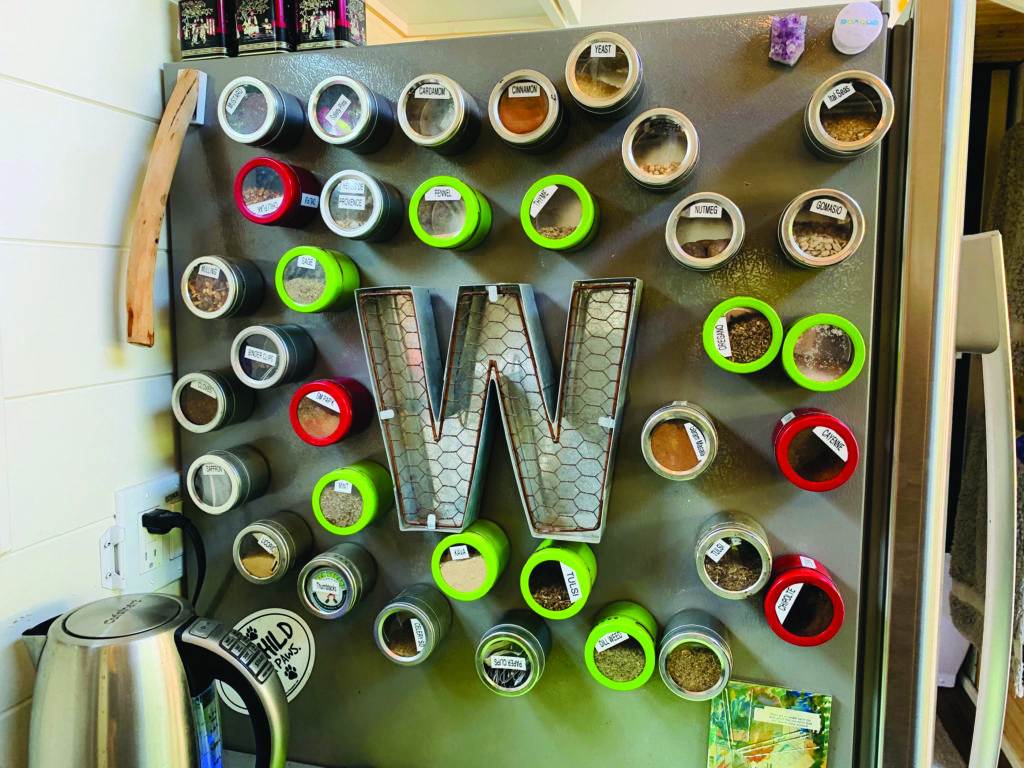A Go-Small Trend on the Rise
Acouple summers ago, I turned to my husband Eric and said, “How about we downsize and move into a tiny home?” After living in Marin County for more than six years, spending $108,000 in rent, and being outbid three times trying to purchase land, we were motivated to investigate alternatives.
Henry David Thoreau, who wrote Walden in 1854, is sometimes mentioned as the forefather of the tiny-home movement. Other early pioneers include Lloyd Kahn, author of Shelter (1973), Lester Walker, author of Tiny Houses (1987), and Sarah Susanka, who wrote The Not So Big House (1997).
A tiny house is generally considered to be under 400 square feet (though some are as small as 80 square feet)—and portable. Tiny houses, as distinguished from recreational vehicles (RVs), are designed to be sturdier and to last longer. Whereas RVs (motorhomes) are built with light materials designed for mobility and temporary living, tiny homes simulate long lasting classic homes with square windows, slanted roofs, and siding, etc. Tiny houses are considerably heavier than RVs even though they do not contain an engine. In comparison to traditional homebuilding, tiny homes require only 10-12 weeks to complete and are very customizable.
Why are tiny homes becoming so popular? With housing prices on the rise and income levels not keeping up with the rising cost of housing, renters and owners are feeling the pinch. Many homeowners and renters are paying more than 30% of their income for housing—a kind of hamster wheel that doesn’t leave many options for travel, saving for retirement, or sending kids to college.
As the United States finds itself in the throes of an affordable housing crisis, the go-smaller tiny home counter movement offers a viable sustainable alternative. There are TV shows responding to the popularity of the trend, such as “Tiny House Nation,” “Tiny Luxury,” and “Tiny House Hunters.” On YouTube the “Living Big in a Tiny House” channel reaches more than 2.3 million subscribers and beautifully shares the ways people are getting tiny.
Clearly one of the biggest barriers to going tiny is finding a legal place to park. City and county zoning ordinances have not kept up with the trend, but that is changing. In 2017, California passed the Accessory Dwelling Unit (ADU) ordinance allowing single-family homeowners to build a detached building on their property where space allows. And while ADUs generally include only fixed living buildings—cottages, in-law units, or granny flats—mobile tiny houses and homes on wheels are excluded.
Fresno became the first California city to amend its ADU ordinance to allow “moveable tiny houses.” San Luis Obispo, which is confronting its own affordable housing crunch, followed suit in 2019. The City of Los Angeles just approved moveable tiny houses as ADUs, and San Diego is expected to follow suit.




For Eric and me the path of downsizing our life forced us to make some hard choices about how many physical things or cherished hobbies had to go in order to fit life into our 300-square-foot home. And while we live in a
showcase tiny home, the exercise has taught us to be disciplined and adhere to the mantra “A place for everything and everything in its place.” When a possession fails to find its place, it gets fast-tracked into the “Go” box.
We love and advocate for this lifestyle, having traveled 6,000 miles on the open road including visits to many tiny house festivals that bring together builders, suppliers, designers, certifiers, lenders, and enthusiasts. We’ve
showed our home to more than 7,000 people and may have seen some Common Ground readers at the recent Bioneers Conference at the Marin County fairgrounds.
So I say join the tiny-home revolution. Consider reducing your clutter. Take a tour of a tiny home. For Eric and me it feels like we’re just starting to deepen into what this tinyhome lifestyle is all about—freedom while reducing our footprint.
Lindsay Wood is co-founder of Experience Tiny Homes, a tiny home design consulting firm that specializes in guiding people through a six-step framework that results in Dream Tiny Home concept designs.